How does western thuja "Brabant" differ from the variety "Smaragd"?
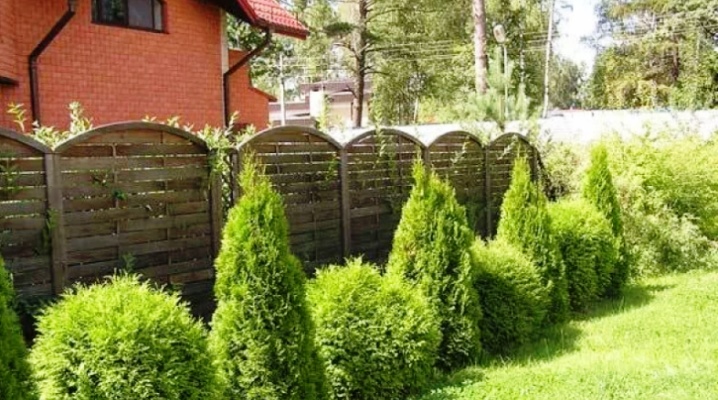
Tuya is the queen of the suburban area. It grows well, gives the garden a luxurious look and exudes a wonderful pine scent. In addition, it saturates the space with useful phytoncides that purify the air. Most often, thuja is used to create a hedge, a green wall enlivens the suburban area. Two varieties are popular with gardeners: "Smaragd" and "Brabant". These crops are very similar, they are tall, with a lush conical crown and rich green needles. But if you compare these plants, you can find several significant differences.
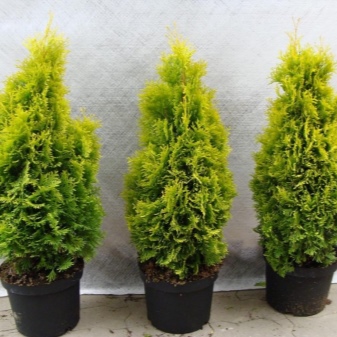

Comparison of the characteristics of varieties
The crown of the western thuja "Smaragd" has an ideal pyramidal shape, it remains relatively flat even without pruning. "Brabant", however, must be carefully trimmed, as the trees of this variety are more branching. The color of the needles also differs - in "Brabant" it is light green, and in "Smaragd" it is darker, with an emerald hue.
The bark of both varieties of thuja is brown, peeling, egg-shaped cones periodically appear on the branches.
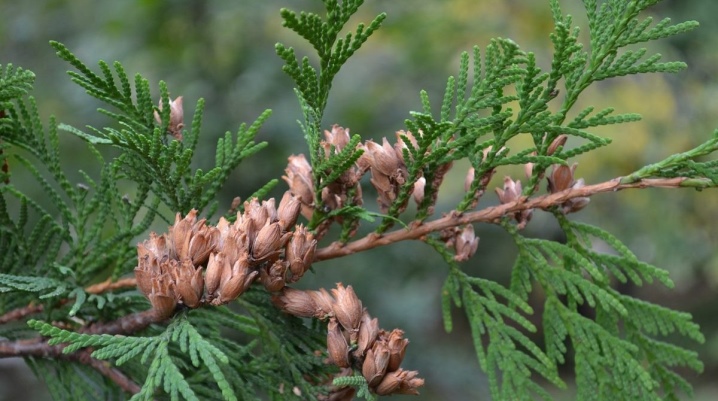
Thuja is frost-resistant, this culture normally tolerates the Russian cold winter. But "Smaragd" is more unpretentious, therefore, in those regions where in the cold season the thermometer drops to -40 ° C, it is better for gardeners to prefer this particular variety. The needles of "Brabant" turn yellow in unfavorable conditions, and the tree looks unaesthetic. In addition, thuja "Smaragd" needs less sun, so this variety is ideal for the northern regions of Russia.

Difference in fit and care
There is one significant difference in planting two varieties of thuja: young Smaragda trees are planted at a distance of about 70 cm from each other, and Brabant seedlings need more space, at least 1 meter. This difference in distance is explained by the fact that the "Brabant" has a wider spreading crown, which requires more space. For the rest, when planting these two varieties of thuja, you can follow the general rules:
- it is easier to grow thuja from seedlings that are 1-2 years old; you can buy them in special stores or nurseries;
- plant trees in the off-season - early autumn or spring, when the snow melts;
- deep pits are formed for planting, their size depends on the size of the root system, but it should not be less than 80 cm;
- the land must be properly prepared, it must contain sand and peat, and sod and compost are additionally introduced into the depleted soil;
- to stimulate growth, the soil is saturated with ash and nitrophosphate;
- a young tree after planting is watered abundantly, and the land around is mulched with bark, sawdust or needles;
- in the first couple of years, the seedlings are covered with an awning, which protects the delicate crown from the aggressive effects of the environment and the scorching sun.


Both types of thuja are quite hardy and unpretentious. In order for the trees to be beautiful and grow well, it is enough to periodically water, feed and cut them. It is recommended to apply organic fertilizers: horse manure, chicken manure, peat. Organics have a prolonged effect, so the next top dressing will need to be done only in the third year. Fertilize the crop in the spring.
Thuja loves moisture, it must be watered in the spring once a week, and in the summer every 4 days. Of course, you should be guided by the amount of precipitation; in case of prolonged rainy weather, watering is canceled.Each young tree needs about 10 liters of liquid.
Daily spraying with cool water will help make the needles brighter, and the twigs strong and elastic.

An important part of thuja care is pruning and crown shaping. The tree is trimmed twice a year, in March and August. During the procedure, dried and rotten twigs are removed, as well as give an even shape to the crown. "Brabant" is cut more radically, as it branches more and grows faster. But the crown of the thuja "Smaragd" retains its shape longer after pruning, this is due to the slower growth of branches.

Thuja normally tolerates Russian 30-degree frosts. But it should be properly prepared for winter. With the beginning of autumn, stop feeding, and when the temperature starts to drop to + 4 ° C, cover with a light cloth and insulate the root area. It is first necessary to do the processing of wood from pests and fungal diseases. Thuja "Brabant" is especially necessary for careful preparation for winter, it is less frost-resistant than "Smaragd", and it is additionally recommended to cover it well with spruce branches.

Which thuja grows faster?
Both "Smaragd" and "Brabant" are tall trees. However, Brabant stretches faster and is the fastest growing variety. An annual growth of 30 cm in height is considered common for this type of thuja, and with good care it can be as much as 50 cm. The height of an adult tree in the southern regions reaches 20 m, and the crown diameter is 4 m, but in the conditions of the Russian climate, "Brabant" usually grows no higher than 6 meters.
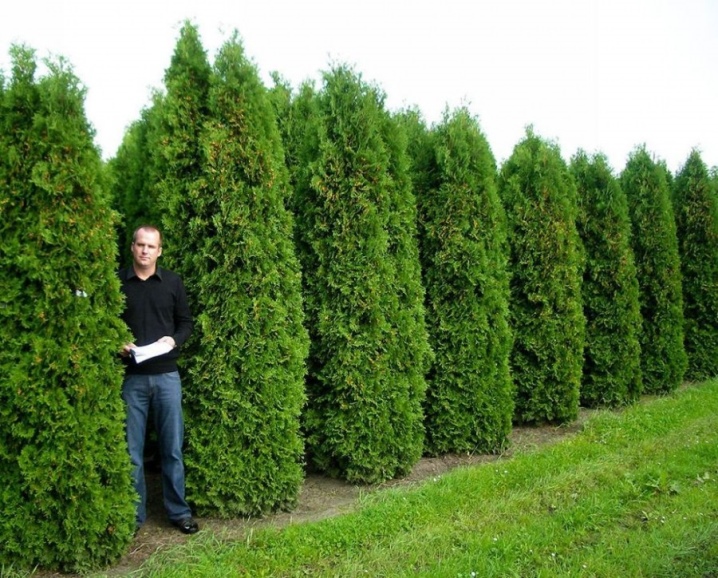
Though slower, “Smaragd” is also growing well: about 20 cm in length and 5 cm in width annually. An adult tree in Russian climatic conditions can reach 5 meters, and in the southern regions - up to 15 m.
There are also more miniature varieties of thuja "Smaragd", for example, "Sunny Smaragd", the height of the trees does not exceed three meters.


Those looking for a quicker hedge should no doubt choose Brabant. Three years later, you will be able to see a full-fledged one and a half meter wall of young trees. Although this type of thuja needs more careful and frequent pruning, fast and rapid growth is the undoubted and main advantage of the Brabant variety.

Which one is better to choose for landscape design?
Thuja is ideal for creating a hedge - an impenetrable coniferous wall. For these purposes, they often choose "Brabant", which grows rapidly, and a denser wall without gaps is obtained from it. Trees planted in a row are given a conical or rectangular shape. A green fence noticeably transforms the site and shelters it from prying eyes. For greater density, trees can be planted in a checkerboard pattern in two rows.
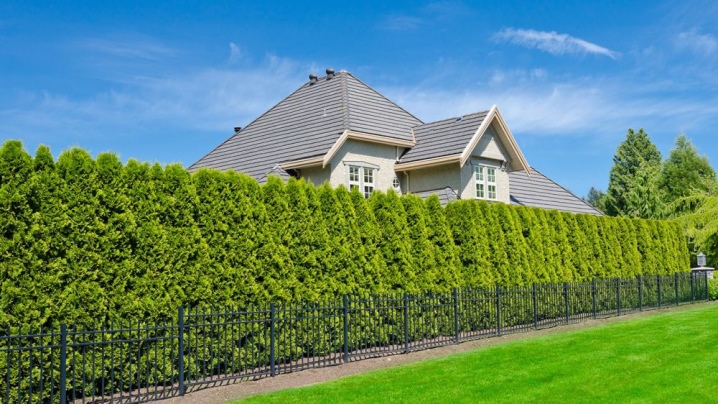
For those who do not want to bother with time-consuming crown formation, it is better to choose "Smaragd". This variety of thuja looks quite aesthetically pleasing even without pruning. Thanks to its even pyramidal shape and rich dark green needles, this plant will look beautiful in any corner of the garden. It can be planted separately as single trees or in groups of three. Thuja looks good next to an evenly mowed lawn or on a wide area with gravel. The space can be decorated with boulders of an unusual shape.
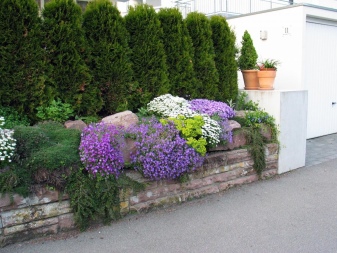
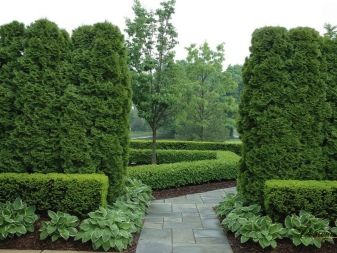
Both varieties are suitable for topiary. From the bushes, you can form bizarre shapes: cones, columns, spirals, cubes and balls. As already noted above, due to not such rapid growth, the figures on the "Smaragd" thuja keep their shape longer. Although some summer residents note that the branchy "Brabant" gives more imagination for creativity.

Conifers go well with flowering lianas, bright flowers look gorgeous against a background of monochromatic greenery. You can also create interesting compositions by placing the thuja next to the flower bed. The main thing is to successfully combine the combination of colors. For example, snow-white petunia, pink incense and hydrangeas of delicate shades are more suitable for the delicate greenery of "Brabant", and next to the thuja "Smaragd", you can plant lilac geraniums, red phlox, as well as yellow or blue irises.
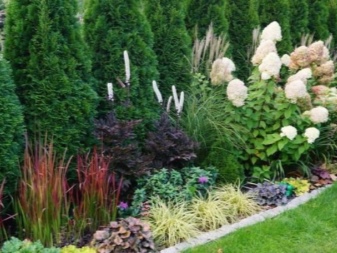

Which variety of thuja to choose also depends on which part of the garden the tree will grow in. It should be noted that "Smaragd" is shade-tolerant, in contrast to the "Brabant" variety, which needs more light. Therefore, in landscape design, it is important to take into account not only the aesthetic side, but also the characteristics of the cultures. The "Brabant" in the shade can turn yellow and spoil the beautiful view of the garden. Giving preference to one or another variety, the main thing is to provide the trees with full care.
Thuja, grown with care, will surely thank the gardener with beautiful bright greenery and rapid growth.
About how the western thuja "Brabant" differs from the variety "Smaragd", see the next video.



































































The comment was sent successfully.